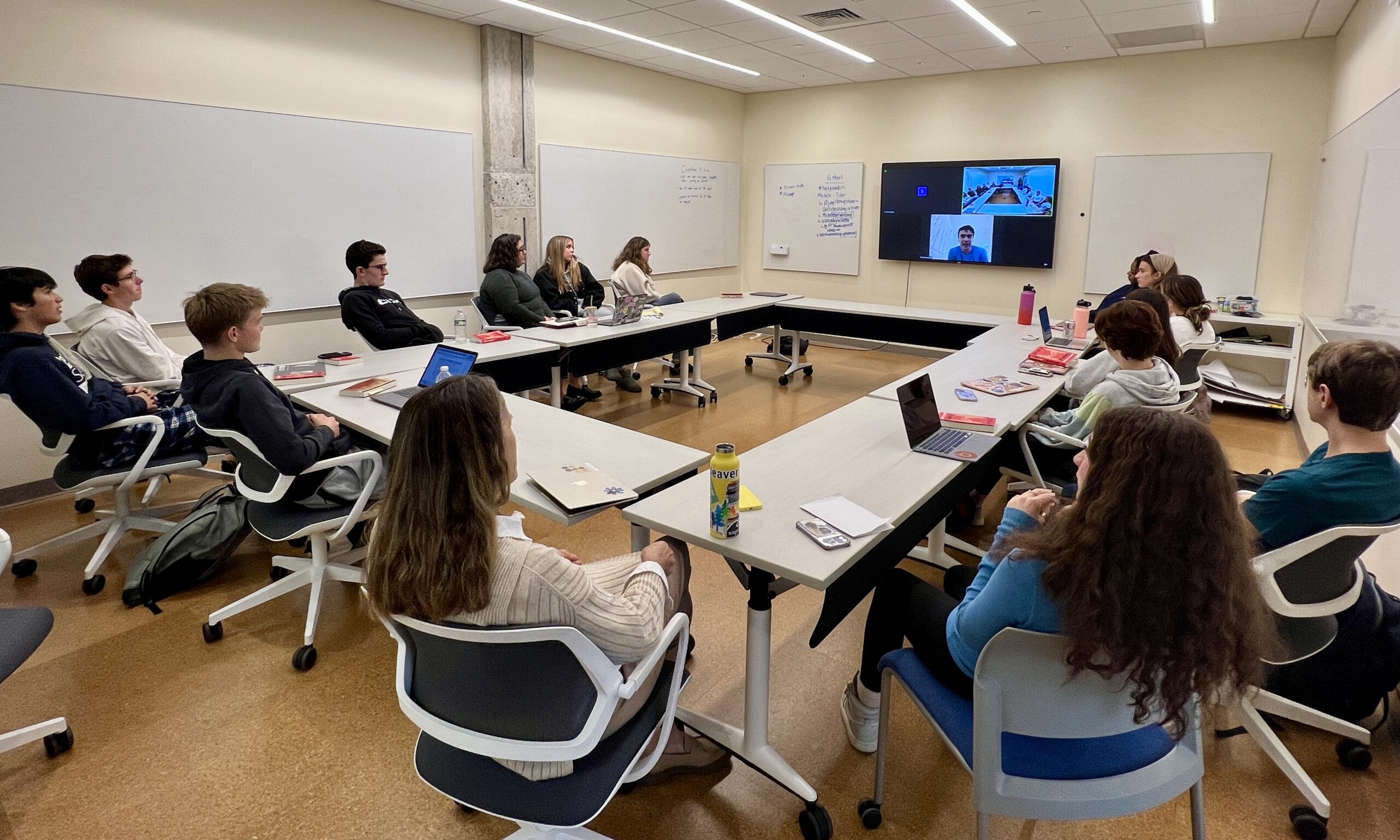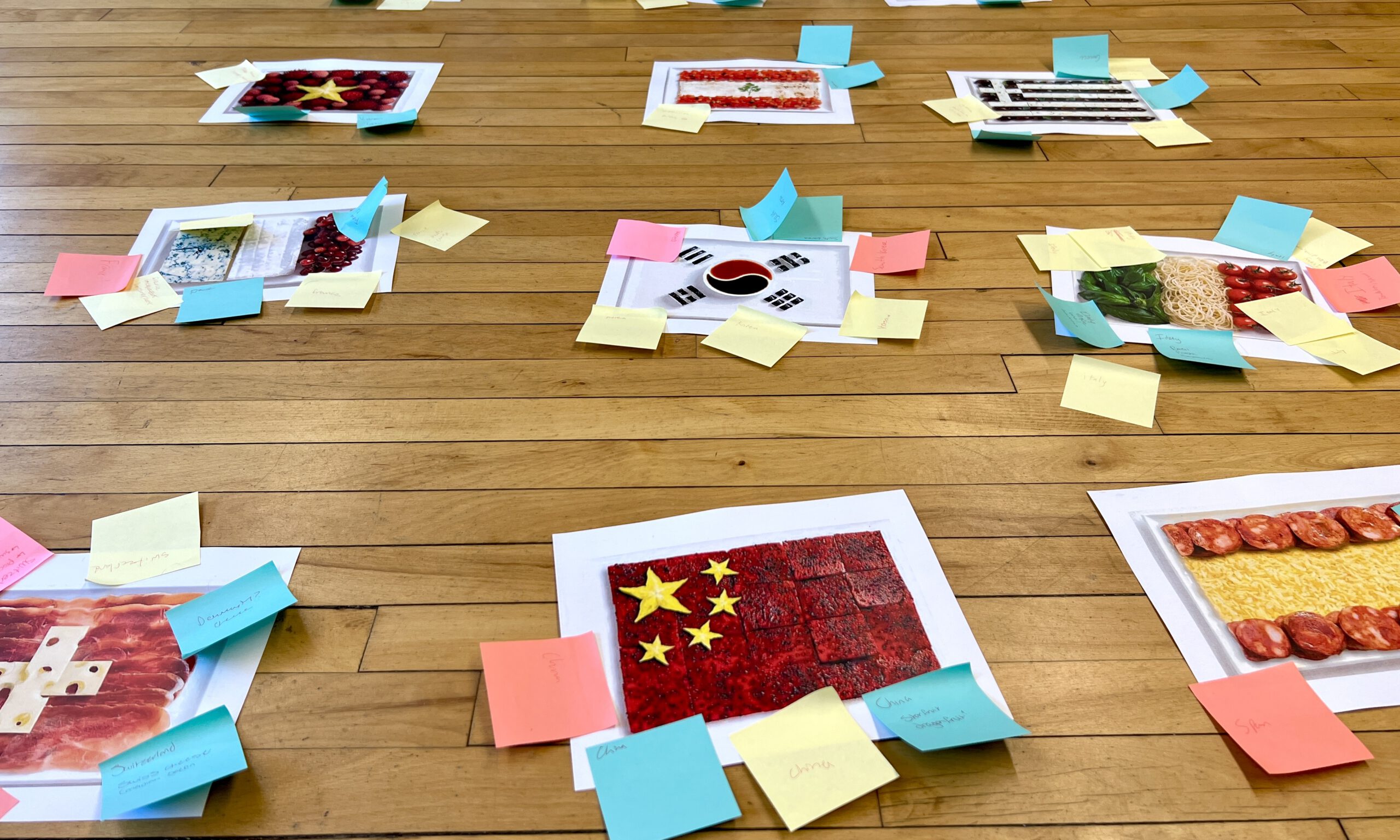Class: Literature of Food
Grade: Upper School
Teacher: Sophia Baez
Literature of Food is an English elective that provides students a look into how food is celebrated around the world and how its presence in literature can reveal themes of family, culture, and connection. This semester, an exploration of cuisine took place through texts such as Crying in H-Mart and Savor: A Chef’s Hunger for More. To contextualize the readings and develop a deeper understanding of each topic, guest speakers and class trips were central to the class.
A big takeaway I have is that taste is your biggest sense. It can connect to memories; it’s our sharpest way of remembering things. This class really emphasized that and how much food means to people.
-Mia Gordon ’24

Savor: A Chef’s Hunger for More by Fatima Ali was the first text the class examined. Fatima Ali, a chef know for appearances on shows such as Top Chef and Chopped, was at the start of an incredible career when her life was cut short due to a rare form of bone cancer. In Savor, Ali recounts her life of adventure, family, illness, and food. Students analyzed how food guided Ali’s life from growing up in Pakistan to gaining recognition on television for her culinary skills.
The familial aspect of food was explored when Ali’s brother, Mohammad Ali, met with students to discuss the book and his sister’s legacy. Despite it being midnight in Pakistan, Mohammad showed up to the virtual meeting with an infectious enthusiasm. Students asked questions about Fatima’s career, the process of finishing the book after she passed, and how he plans to keep her spirit alive. Mohammad emphasized how he feels closest to Fatima when he is being creative in the kitchen.
My hope was to have the meeting with Mohammad bring the book to life and help students remember the humans behind the text. Sometimes when you read, you forget there are real people that are impacted.
-Sophia Baez

Another exciting day in Literature of Food came when Heidi Johnson P’22, Beaver Trustee and cofounder of Purple Suitcase, came to work with the class to evaluate stories of food fostering connection. Students participated in an activity where photos of food–staged to resemble the flag of their country of origin–needed to be identified. Several students were surprised to find that some of their favorite dishes come from countries they did not expect. Following this activity, Johnson shared several examples of relief organizations that combat the impact of natural disasters and famine by preparing food for those in-need.
Literature of Food students are currently finishing Crying in H-Mart and engaging in daily conversations regarding the text. They will leave the class with not only a fresh perspective on food, but also the importance of it within the stories they read.
More about this course: For millennia, humans have had a unique and ever-shifting relationship with their food. From growing vegetables in the soiled ground to buying a Big Mac at the drive-through, we all relate to and connect with food and tastes in varied ways. Additionally, from Marcel Proust to Helen Rosner to Mark Bittman, chefs and authors have explored what we eat, how we eat, and how our relationship with food matters. In this class, we will read, write, cook, and eat. We will examine the politics of food, food insecurity, and how our relationship to what we eat and how we eat informs, nourishes, and shapes our lives.